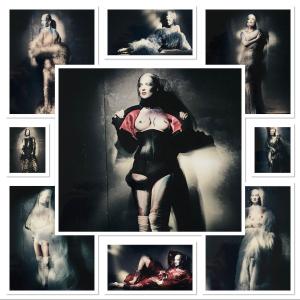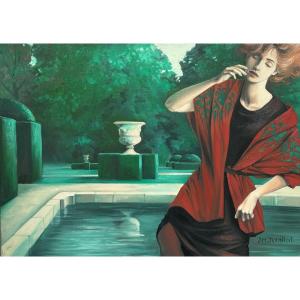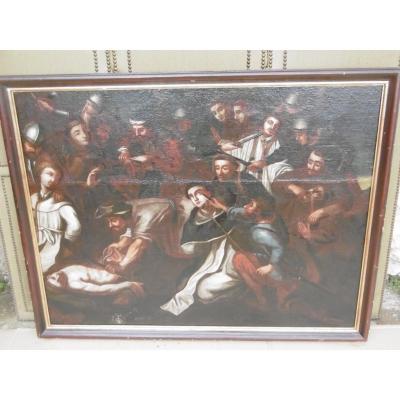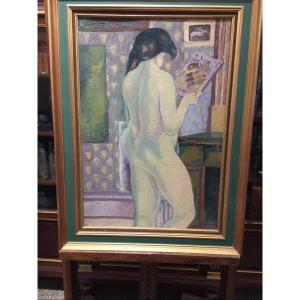Modern black frame
Son of a transporter, Abel Bertram learned the basics of his art in his hometown before settling in Lille where he became a student for three years at the school of fine arts in the studio of Pharaon de Winter (1849 -1924) [1] then he was admitted to the Beaux-Arts school in Paris in the studio of Léon Bonnat (1833-1922). In 1900, he moved to Ponthieu, while retaining links with the capital, since in 1904 he had his workshop at no.59 rue Caulaincourt, and in 1908 at no.10 rue Seveste. In 1923 and 1928, he lived at no 23 boulevard Gouvion-Saint-Cyr in Paris. In 1901, he met Antoine Guillemet who gave him valuable advice on how to work on the pattern. He painted landscapes, nudes (Nu assis, Musée d'Art moderne de Paris), and seascapes in Finistère in a fawn style very tempered by gray skies and hazy horizons. He settled permanently in Paris in 1927, returning regularly to Saint-Omer to paint the landscapes of Picardy on the motif. Member of the Salon d'Automne, he exhibited there regularly as well as at the Salon des Tuileries and in 1926 took part in the Independents retrospectives with his paintings Le Livre, La petite Eva, Sortie de maison and Rue de village. At the Indépendants in 1927, he exhibited Yellow Water and Green Water, then in 1928 Baigneuse et Nu couché and in 1929 a nude and another unnamed canvas. At the National Society of Fine Arts, he exhibited in exhibition [2].




















 Le Magazine de PROANTIC
Le Magazine de PROANTIC TRÉSORS Magazine
TRÉSORS Magazine Rivista Artiquariato
Rivista Artiquariato
